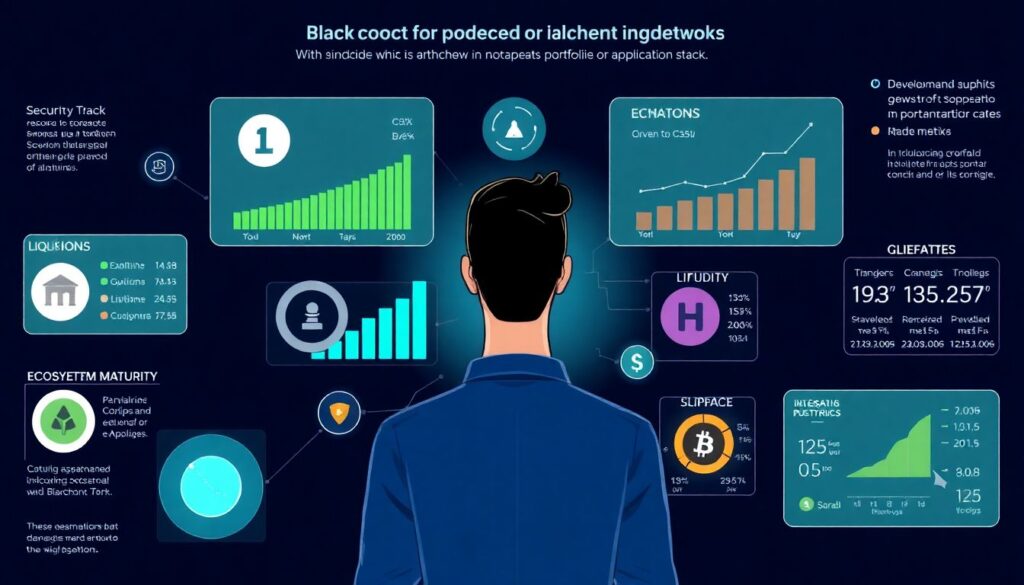Understanding Cross-Chain Diversification in 2025
As the blockchain ecosystem matures, the need for diversification across multiple networks has shifted from a strategic advantage to a necessity. With over 150 active layer-1 and layer-2 chains as of early 2025, investors and developers face both opportunities and risks when navigating this fragmented landscape. According to data from Chainalysis, cross-chain transactions increased by 430% between 2021 and 2024, indicating a growing reliance on multi-chain infrastructure.
Diversifying across chains can mitigate exposure to a single network’s vulnerabilities—be it technical failures, economic attacks, or regulatory crackdowns. However, achieving this securely requires a nuanced understanding of the tools, protocols, and trade-offs involved.
Comparing Approaches to Multi-Chain Diversification
There are three primary strategies for engaging with multiple blockchains:
– Manual Deployment: Users or developers interact with each chain individually, managing assets and smart contracts separately.
– Cross-Chain Bridges: Protocols like Wormhole, LayerZero, and Axelar allow for asset and data transfers across chains.
– Multi-Chain Native Protocols: Applications like Thorchain and Osmosis are built natively to operate on more than one chain without relying on traditional bridging.
Manual deployment offers maximum control but is resource-intensive and prone to user error. Bridging protocols simplify asset mobility but introduce additional attack surfaces. Multi-chain native dApps reduce complexity for end-users but are often limited in supported chains and liquidity.
Advantages and Drawbacks of Key Technologies

Bridges, while popular, remain high-risk. A 2023 report from CertiK highlighted that over $2.1 billion was lost to bridge exploits in the previous two years, with the Ronin and Nomad hacks serving as cautionary tales. Despite improved auditing standards in 2024, trust assumptions remain a concern.
Layer-2 rollups (e.g., Arbitrum, Optimism) offer scalability and lower fees while inheriting Ethereum’s security. However, cross-rollup interoperability is still underdeveloped, and users face friction moving assets between rollups.
Interoperability-focused chains like Cosmos and Polkadot provide native tools (IBC, XCM) for secure cross-chain communication. These ecosystems saw a 68% rise in TVL (Total Value Locked) in 2024, signaling growing user trust. However, their adoption outside of niche communities remains limited.
How to Choose Chains for Safe Diversification

Choosing which chains to include in your portfolio or application stack depends on several factors:
– Security Track Record: Review past exploits, uptime, and audit history.
– Liquidity and Ecosystem Maturity: Chains with deep liquidity and active developers reduce slippage and integration risk.
– User Base and Adoption Metrics: Networks with high daily active addresses and stable gas markets tend to offer more sustainable growth.
It’s also critical to assess whether a chain supports native interoperability or relies heavily on third-party bridges. For instance, Cosmos-based chains using IBC have a lower failure rate in cross-chain transfers compared to EVM-compatible bridges.
Best Practices for Safe Cross-Chain Engagement

To minimize risk while maximizing exposure, consider the following:
– Use hardware wallets and multi-sig setups when interacting with lesser-known chains
– Favor audited bridges with insurance or slashing mechanisms
– Monitor on-chain analytics (e.g., Nansen, DeFiLlama) to track liquidity shifts and potential exploits
Additionally, diversify not just across chains, but across consensus mechanisms (PoW, PoS, DAGs) and jurisdictions, as regulatory pressures vary widely.
Trends Shaping Cross-Chain Strategies in 2025
The rise of modular blockchains—like Celestia and Avail—has redefined how applications scale and interact. These networks decouple consensus, execution, and data availability, allowing developers to deploy across chains without duplicating infrastructure. Modular ecosystems are predicted to capture 20% of new DeFi projects by Q4 2025, according to Messari.
Meanwhile, restaking protocols such as EigenLayer are enabling cross-chain security sharing, reducing the need for siloed validator sets. This innovation could drastically lower the cost and complexity of operating on multiple chains.
Lastly, AI-assisted smart contract deployment is becoming a game-changer. Tools that auto-configure contracts for different chains based on gas fees, latency, and current congestion are helping users avoid manual errors and optimize for cost-efficiency.
Conclusion
Diversifying across multiple blockchains is no longer optional in 2025—it is essential for resilience and growth. However, safe diversification requires a deep understanding of the tools and technologies involved. By combining secure practices, careful chain selection, and awareness of emerging trends, users and developers can navigate the multi-chain future with confidence.

